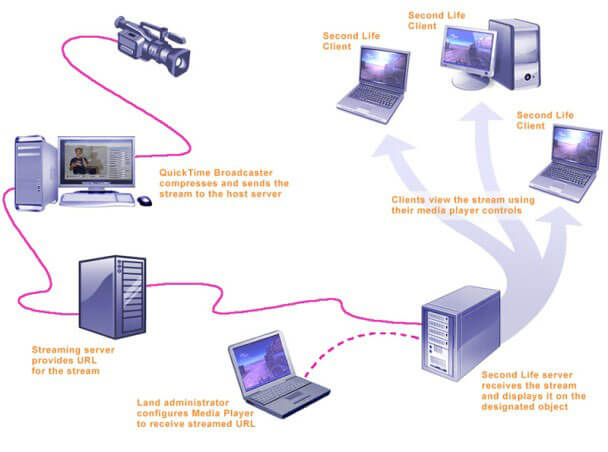Computer Terms: Acronyms & Abbreviations
Find here a list of important computer acronyms and abbreviations...
Find here a list of important computer acronyms and abbreviations...
Glossary of Audio-Visual terms, technologies, and abbreviations. Here you will find definitions for common audiovisual terminology.
If you struggle trying to keep up with or understand some AV terms, here you will find the definition for common audiovisual terminology. This is a helpful glossary of audiovisual terms....
SECAM is an abbreviation for Sequential Color and Memory or Séquentiel couleur à mémoire in French.
SECAM is an analog color television system first used in France. A team led by Henri de France working at Compagnie Française de Télévision (later bought by Thomson) invented SECAM. SECAM uses the same resolution as PAL (625 lines) but transmits the color information sequentially: R-Y on one line and B-Y on the next....
PAL is an abbreviation for Phase Alternating Line.
PAL is a color encoding system used in broadcast television systems in large parts of the world. The PAL TV standard came into the market in early 1960s Europe. The term PAL describes any video, including digital video, formatted for playback on a PAL TV....
NTSC is an abbreviation for National Television System Committee.
The NTSC is responsible for setting television and video standards used in North America, most of South America, and some other countries. The NTSC standard for television defines a composite video signal with a refresh rate of 30 interlaced frames per second. Each frame contains 525 lines and can contain 16 million distinct colors....
Streaming video is a sequence of “moving images” that are sent in compressed form over the Internet and displayed by the viewer as they arrive. Streaming media is streaming video with sound. Streaming multimedia allows the user to begin viewing videos without first downloading the entire file. After a brief period of initializing and buffering, the file will begin to stream – or play – in real-time.

...